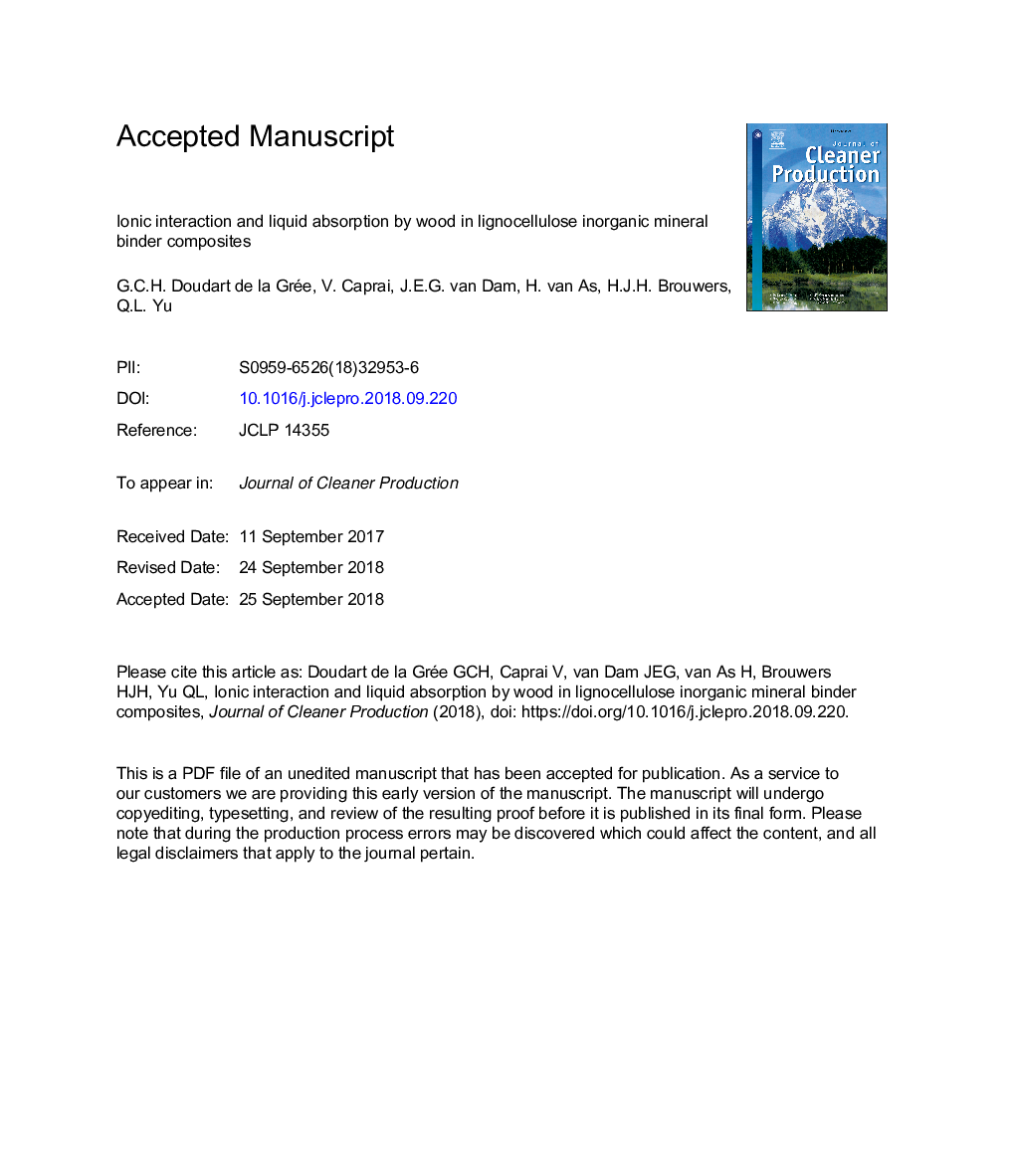| Article ID | Journal | Published Year | Pages | File Type |
|---|---|---|---|---|
| 11019802 | Journal of Cleaner Production | 2019 | 41 Pages |
Abstract
This study investigates the suitability of alkali activated binders to replace Portland cement for lignocellulosic mineral-binder composite, aiming to lower the CO2 footprint. The effects of wood composition on the reaction kinetics of the binders and the formation of the reaction products are studied using isothermal calorimetry and ion chromatography. The ionic behaviour analysis of Ca2+ and Na+ ions in the binders shows that in presence of wood, a neutralisation of OHâ ions and reduction of Ca2+ and Na+ ions during the first 24â¯h of curing take place, which alters the formation of C-A-S-H and N-A-S-H gels and influences the final composite performance. Moreover, the position of water absorbed by wood with different moisture levels is investigated by using T2 relaxometry Time Domain (TD) NMR to understand the required water amount for the binder reaction as well as the liquid uptake of the wood and occurring ion migration. The results show that a hybrid binder consisting of 70% alkali activated material and 30% cement applied without NaOH pre-treatment results in a composite with excellent mechanical performances and reduced environmental impacts of 61.5% compared to a pure cement system.
Related Topics
Physical Sciences and Engineering
Energy
Renewable Energy, Sustainability and the Environment
Authors
G.C.H. Doudart de la Grée, V. Caprai, J.E.G. van Dam, H. van As, H.J.H. Brouwers, Q.L. Yu,
